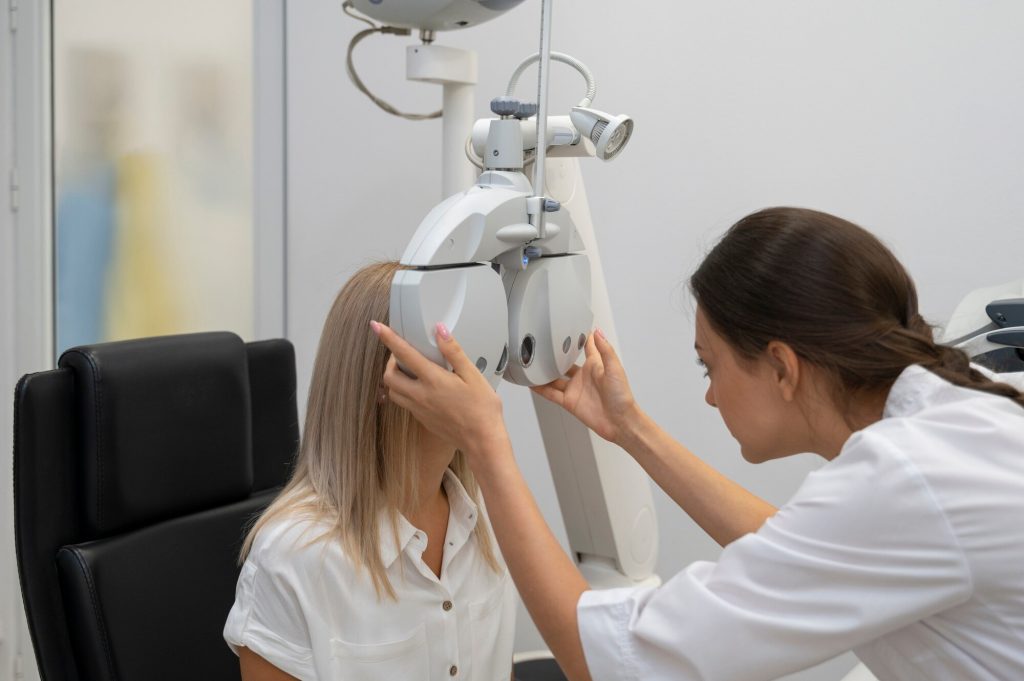August is designated as National Eye Exam Month, a time dedicated to emphasizing the importance of regular eye check-ups and raising awareness about maintaining eye health. This observance is crucial because it highlights the role of comprehensive eye exams in detecting vision problems and preventing potential eye diseases. Understanding why National Eye Exam Month is celebrated, how it is observed, and the types of eye exams available can encourage individuals to prioritize their eye health.

Why National Eye Exam Month is Celebrated
National Eye Exam Month was established to underscore the significance of regular eye examinations. Many people often overlook eye health until they experience noticeable vision problems. However, routine eye exams are essential for early detection and treatment of various eye conditions, such as glaucoma, cataracts, macular degeneration, and diabetic retinopathy. Early intervention can prevent these conditions from progressing and potentially leading to severe vision loss or blindness.
This month-long observance serves as a reminder to schedule an eye exam and encourages individuals to adopt preventive measures for maintaining good vision. It also aims to educate the public about the connection between eye health and overall well-being, as eye problems can sometimes indicate underlying health issues like diabetes and hypertension.
How National Eye Exam Month is Celebrated
Throughout August, various organizations, including eye care professionals, hospitals, and non-profit organizations, engage in activities to promote eye health. These activities often include:
- Educational Campaigns:
Eye care professionals and organizations run educational campaigns to inform the public about the importance of regular eye exams. These campaigns use social media, websites, and community events to spread awareness.
- Free or Discounted Eye Exams:
Many optometrists and ophthalmologists offer free or discounted eye exams during August to encourage people to get their eyes checked. These offers make eye care more accessible to those who might otherwise delay or skip their exams due to cost.
- Community Outreach:
Eye care professionals participate in community outreach programs, providing eye exams and distributing educational materials at schools, workplaces, and public events. This outreach helps reach a broader audience and emphasizes the importance of eye health to people of all ages.
- Workplace Initiatives:
Employers often partner with eye care providers to offer on-site eye exams and vision screenings for their employees. These initiatives promote a culture of health and wellness in the workplace.
Types of Eye Exams
Eye exams are comprehensive evaluations that assess various aspects of eye health and vision. Some common types of eye exams include:
- Visual Acuity Test:
This test measures the sharpness of vision using a Snellen chart, which displays letters of varying sizes. It helps determine the need for corrective lenses.
- Refraction Test:
This test identifies the correct prescription for eyeglasses or contact lenses by determining how light bends as it passes through the eye.
- Slit-Lamp Examination:
This exam uses a microscope to examine the structures at the front of the eye, including the cornea, iris, and lens. It helps detect conditions such as cataracts and corneal injuries.
- Tonometry:
This test measures the pressure inside the eye (intraocular pressure) and is crucial for detecting glaucoma.
- Retinal Examination:
Also known as ophthalmoscopy or funduscopy, this test examines the retina and optic nerve for signs of damage or disease. It is vital for diagnosing conditions like diabetic retinopathy and macular degeneration.
- Visual Field Test:
This test measures peripheral (side) vision and can detect issues related to glaucoma and other neurological conditions.
Conclusion
National Eye Exam Month in August serves as a vital reminder of the importance of regular eye exams in maintaining vision health. By celebrating this month with educational campaigns, free or discounted exams, community outreach, and workplace initiatives, we can encourage more people to prioritize their eye health. Understanding the types of eye exams available and their significance can empower individuals to take proactive steps in preserving their vision and overall well-being.


